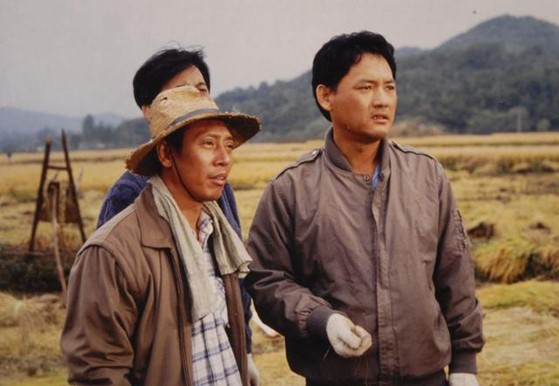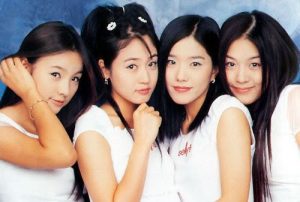Although Korean dramas started airing in the 1950s, the K-drama wave began within the early 1980s, especially with the introduction of color television and a surge in Korean broadcasting companies. The steadily enhancements in industrialization and modernization further started increasing the viewership of Korean dramas, hence crediting the dramas between 1980 and 1989 the 1st generation label. Below are some of the best 1st generation K-dramas.

1. Love and Ambition (1987)
In life, there is always a point where choices must be made. The choices mean forgoing some to hold on to others. Only in a few instances are we fortunate enough to forego nothing and get them all. “Love and Ambition” presented this scenario where the characters have to choose between love or ambition. Released in January, 1987 and set in a poverty post war era, this drama involves mainly two brothers who grow up and pursue different ambitions. Park Tae Joon dives into the law-and-order field while Tae Soo tries to run away from past crimes. Along the way, love enters into the equation, where Tae Joon becomes entangled with Kim Mi Ja, and the characters have to make a life-choice between their passions and romance.

2. Country Diaries (1980)
Released in October, 1980, this vintage series will arouse your desires to have a bite of the hypnotic rural life. “County Diaries” aired during Korea’s urbanization boom thus giving those living in the busy and stressful urban life, brings a nostalgic feeling for their rural hometowns. Also known as “Jeonwon Diaries”, the series gained quite a following given its power to motivate viewers and give meaning to their life through recollection of fond memories. Veteran actors including Kim Soo-mi, Go Doo-shim, and Kim Hye-ja joined other legendary actors in the appealing series that fulfilled the fantasies of countryside life and nature. “Country Diaries” is one of Korea’s longest-running television series with over 22 years of airing. During its 60th anniversary in 2021, MBC aired the “Docuflex – Country Diaries 2021” where original cast members reunited to recollect the memories they had while filming the “Country Diaries”.

3. The Imjin War (1985)
Also referred to as “500 Days of Joseon Dynasty”, this heart-throbbing series revolves around war. Depicting the invasion of Korea by Japan, “The Imjin War” is a nerve-wrecking drama keeping the viewers on their toes with the compelling naval battles as those of the legendary Admiral Lee Shon Shin. Kim Moo Saeng acts as Admiral Lee Soon Shin while Jung Jin acts as Toyotomi Hideyoshi, the protagonist who led the Japanese invasion into Korea. Released in October, 1985, this 54-episode historical fiction drama digs deep into one’s core oozing out excitement entangled in fear and horror with each scene.

4. Sand Castle (1988)
“Sand Castle” takes the viewers on a roller coaster through daring pursuits and undertakings that revolve around relationships. The characters did an exceptional job of imparting their feelings in various instances through their entangling affairs and horrifying fear of being caught. Jang Hyun Joo and Kim Jin Heon are the main actors whose top-notch acting skills are quite enchanting, keeping one asking for more. Released in September, 1988, “Sand Castle” depicts the complexities, sacrifices and consequences that rotate around relationships within the society.

5. Declaration of Fools (1983)
This film, released in October, 1983, gained quite an audience with its satire and humor that criticized the then Korean society. “Declaration of Fools” showcases the extremes between the high and low social classes and depicts the then Korea’s weak societal fabric. The story revolves around Dong-cheol and Hye-yeong whose initial encounter is when Dong-cheol kidnaps her. As the main characters, the story very much revolves around them but broaden and becomes interestingly complex with time as more characters come into the picture. The struggles and breakthroughs experienced by the characters leaves viewers in all sorts of moods and thoughts, especially the unfathomable ending. Each scene arouses an interest that builds up into a yearning that can only be quenched by consuming the whole film.




